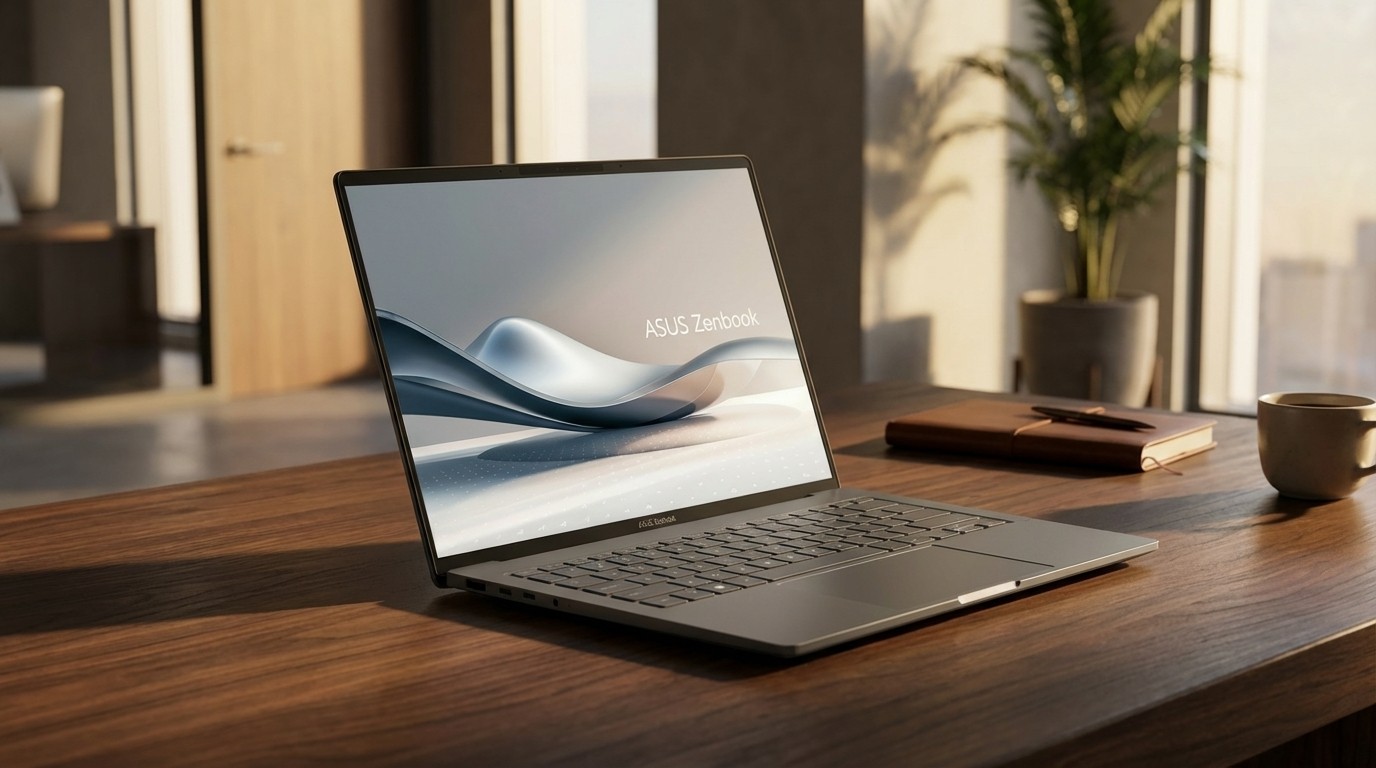Here's what's inside AMD's incredibly powerful Project Quantum
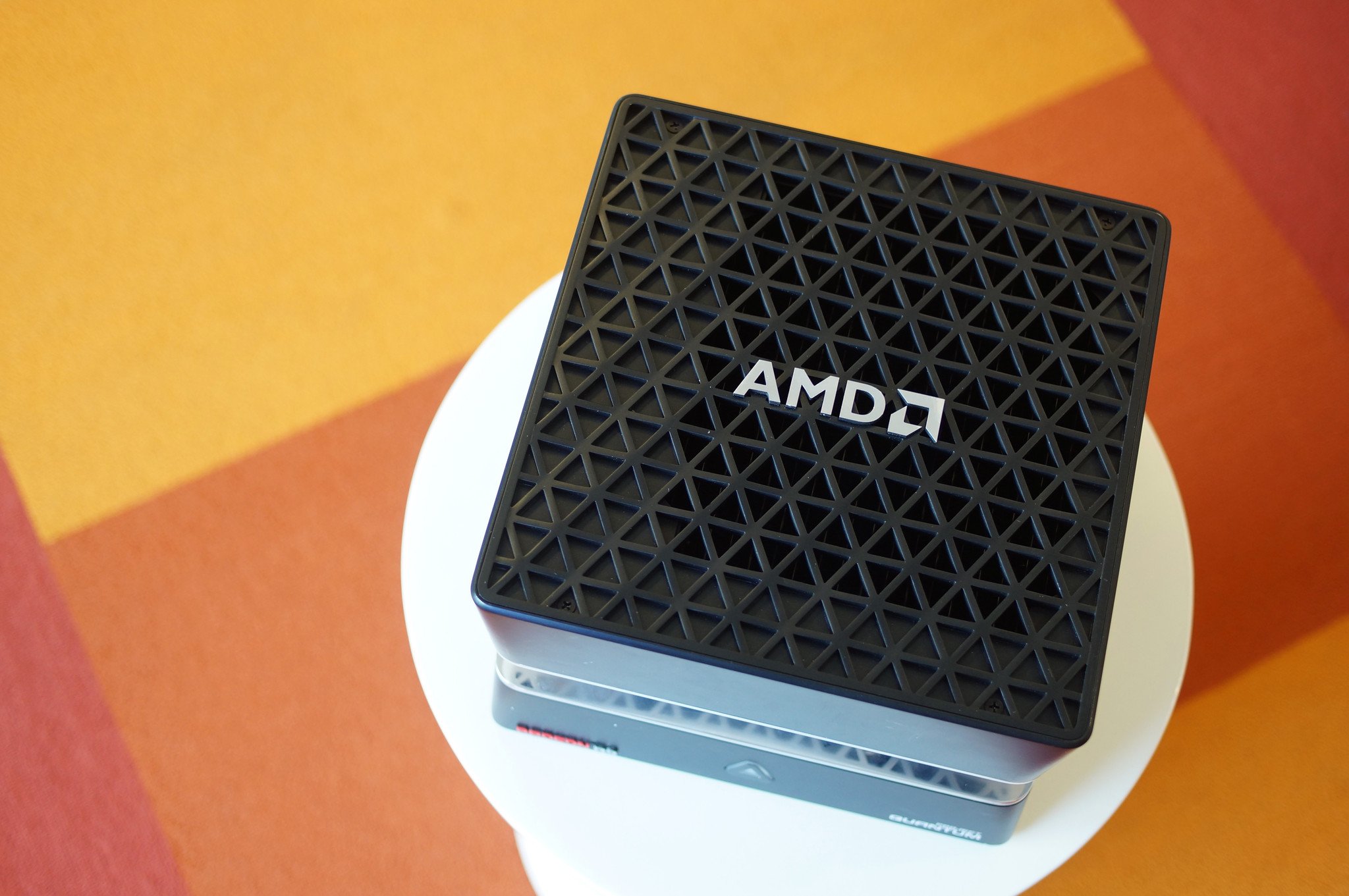
At E3 2015, AMD unveiled Project Quantum, a tiny but powerful concept PC that accommodates an enthusiast-class Radeon Fury X video card.
The project itself is in the prototype stage, with no word as to when (or if) AMD intends to commence retail availability. However, the folks at PC World were able to secure a prototype machine, giving us a first look at the internal hardware.
AMD's Project Quantum is unique in its ability to cram such high-end hardware in a small form factor. While there are several mini-ITX cases that come with sufficient room to fit large video cards, the dual-chambered design is distinctive, and sets the machine apart.
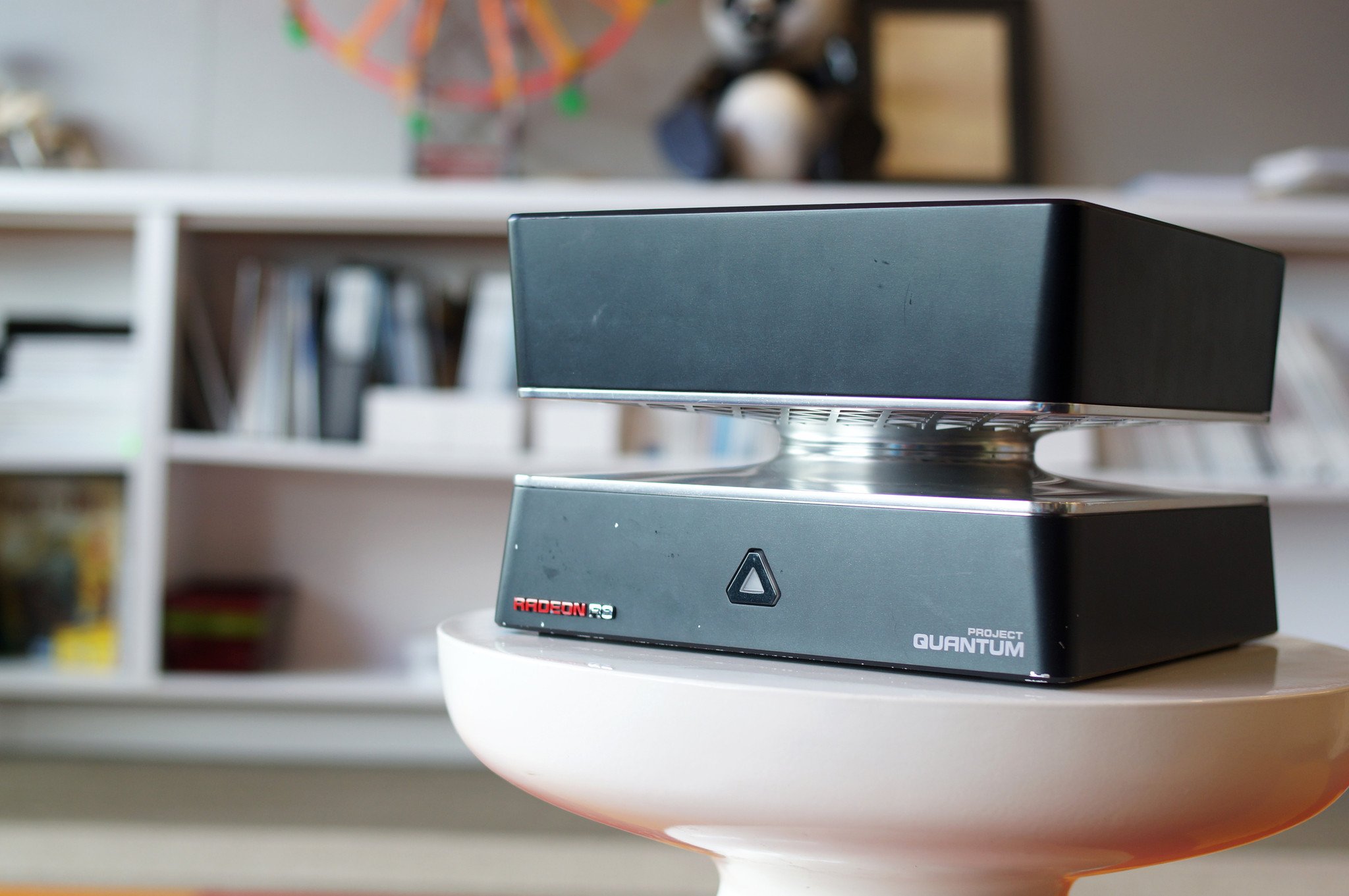
The attention to detail AMD lavished on Project Quantum is evident from the design of the triangular rubber feet, meant to mimic the vendor's logo.
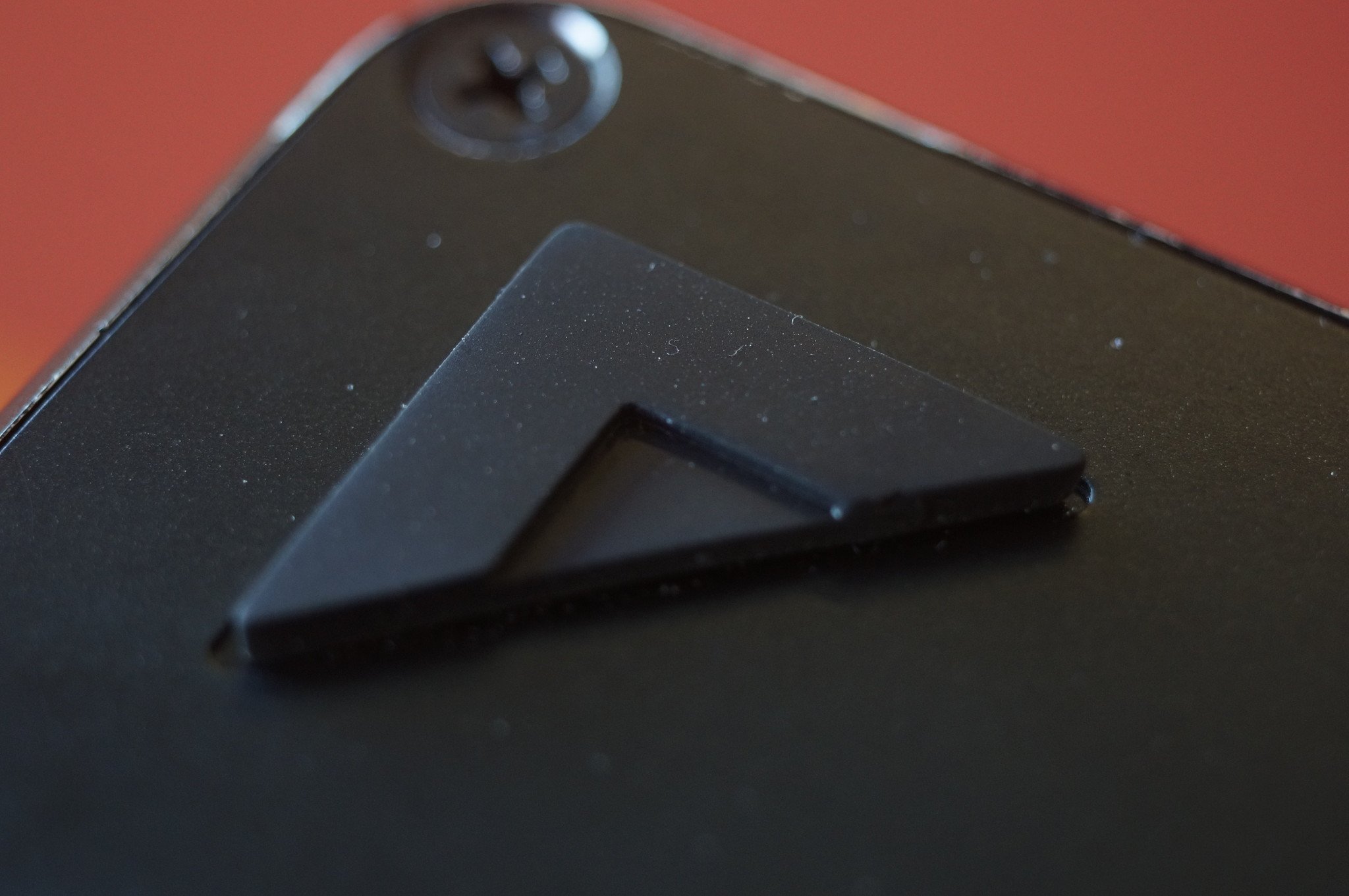
Project Quantum's top half consists of the cooling elements, with a 180mm radiator, pump and a 3D-printed reservoir.
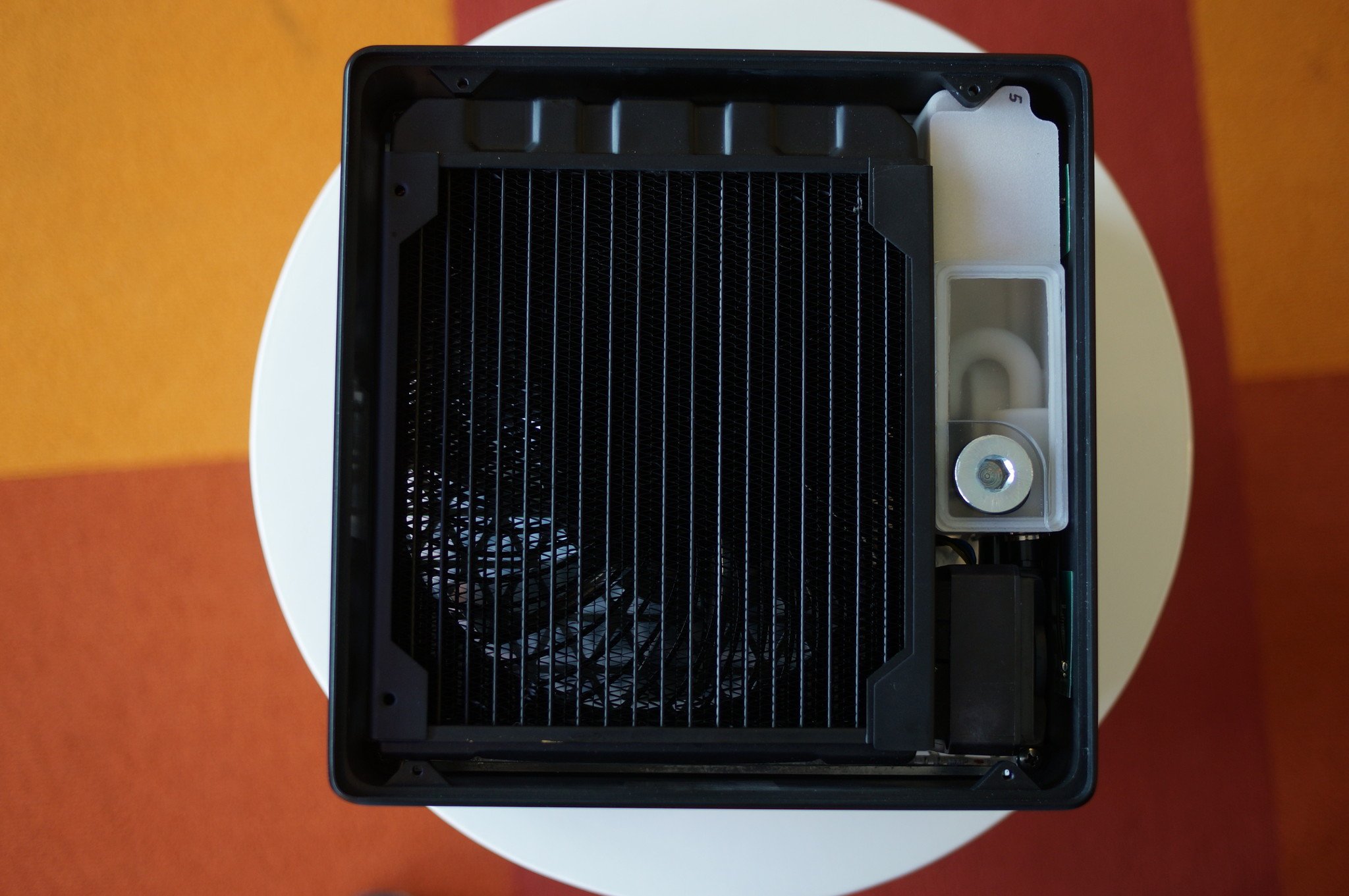
The back of the PC houses the power and display connectors, an assortment of USB 2.0 and USB 3.0 ports as well as Ethernet and audio ports. To accommodate all the hardware in a small form factor, AMD moved the PSU outside.
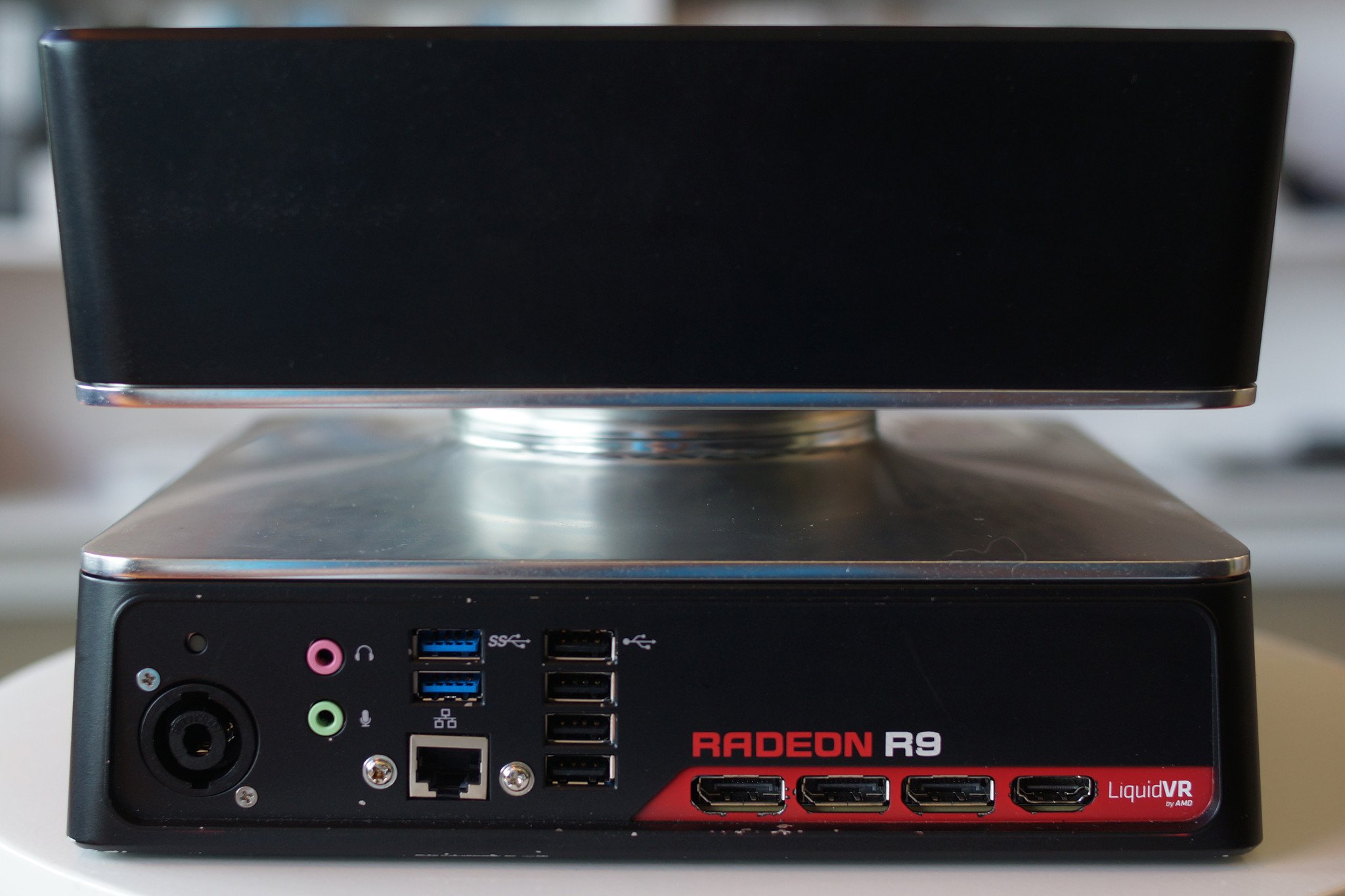
The lower half houses the hardware, which consists of an AMD-branded SSD and a Fury X video card with stacked HBM:
All the latest news, reviews, and guides for Windows and Xbox diehards.
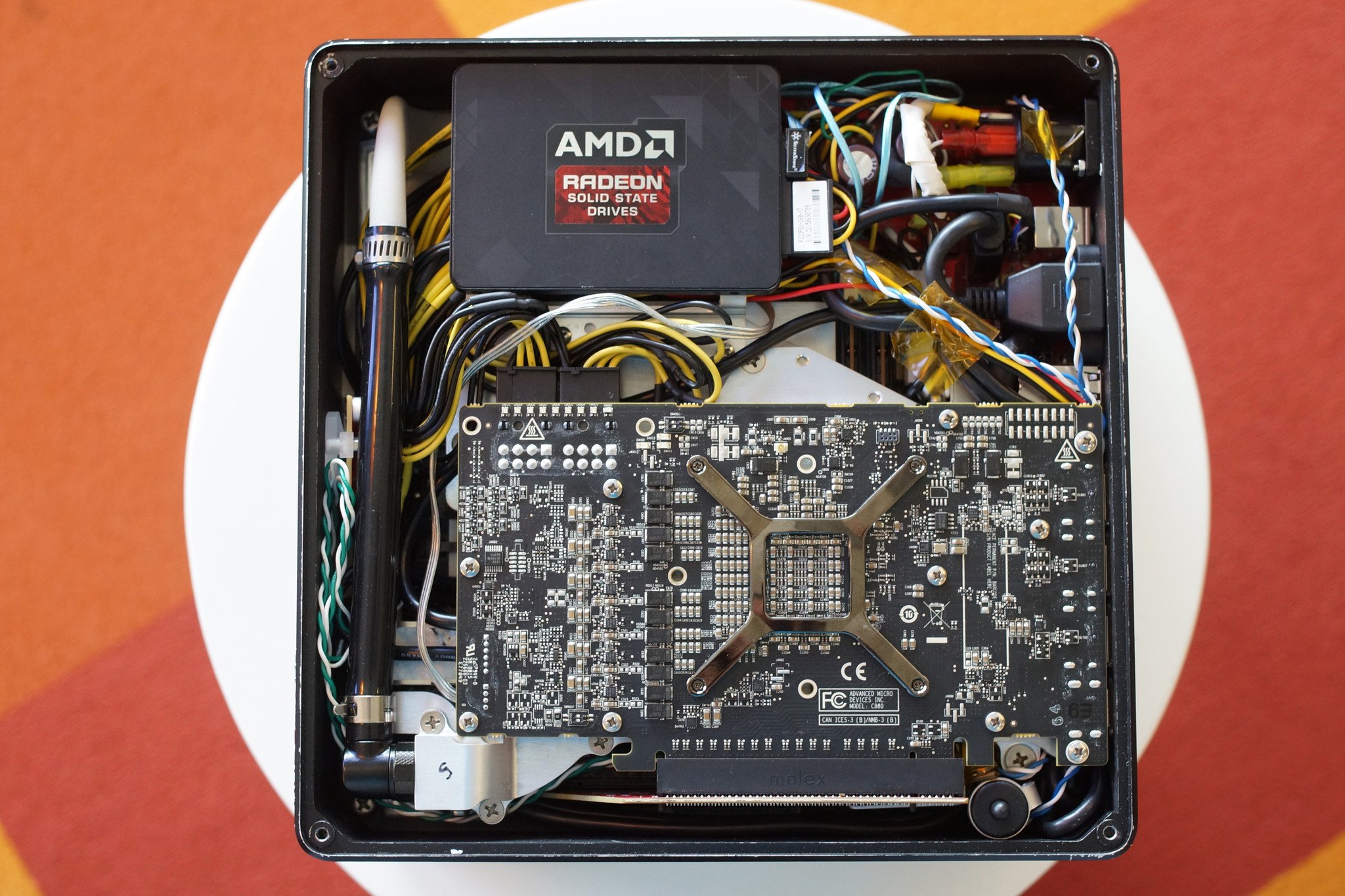
Interestingly, AMD went with Intel's Core i7-4790K "Devil's Canyon" CPU for Project Quantum, stating that it did so to accommodate what end-users would want in a high-end machine.
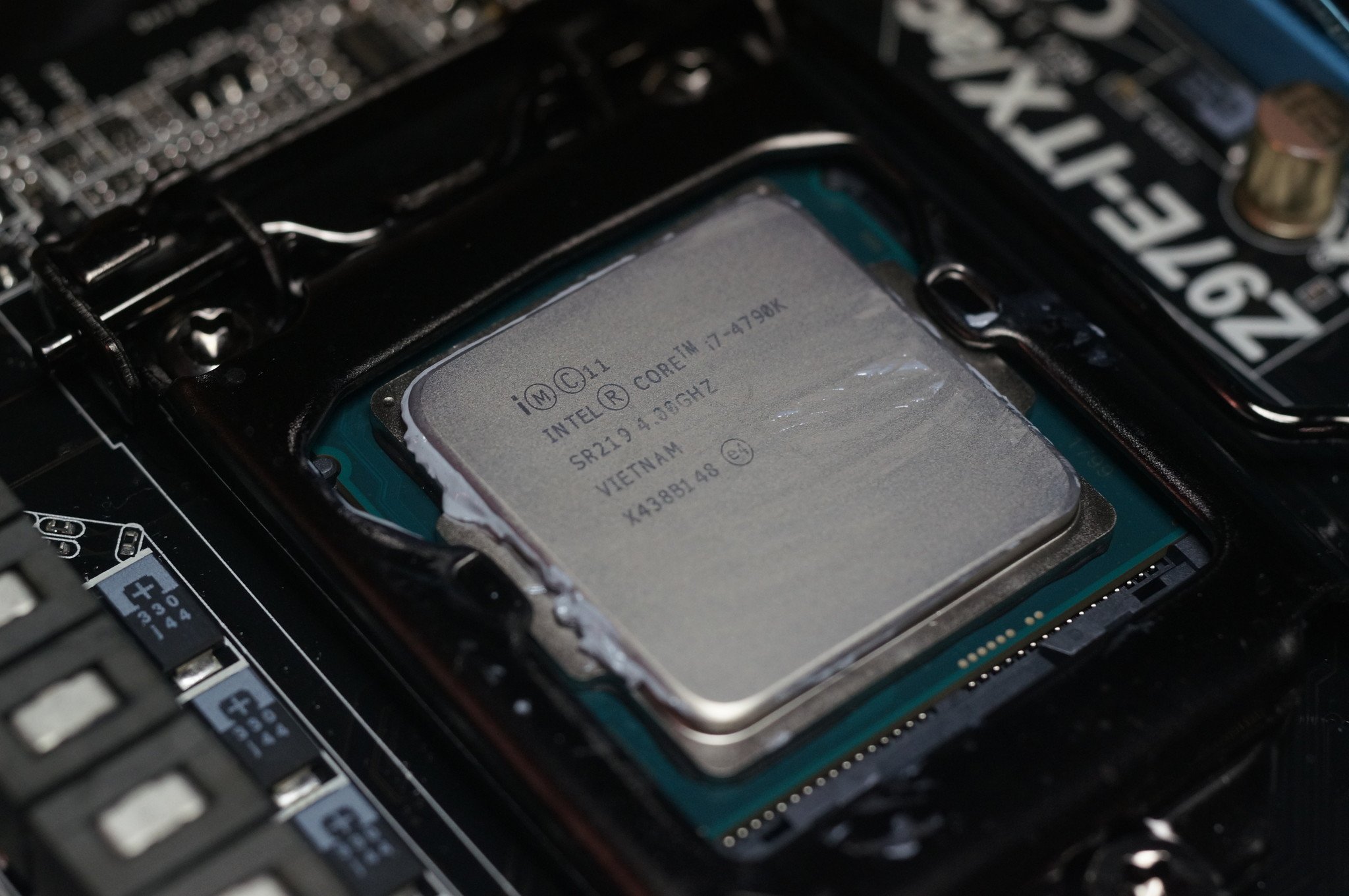
The motherboard is an ASRock Z97E-ITX/ac board, but AMD has modified it so that it can face downward in the case to facilitate contact with the water block.
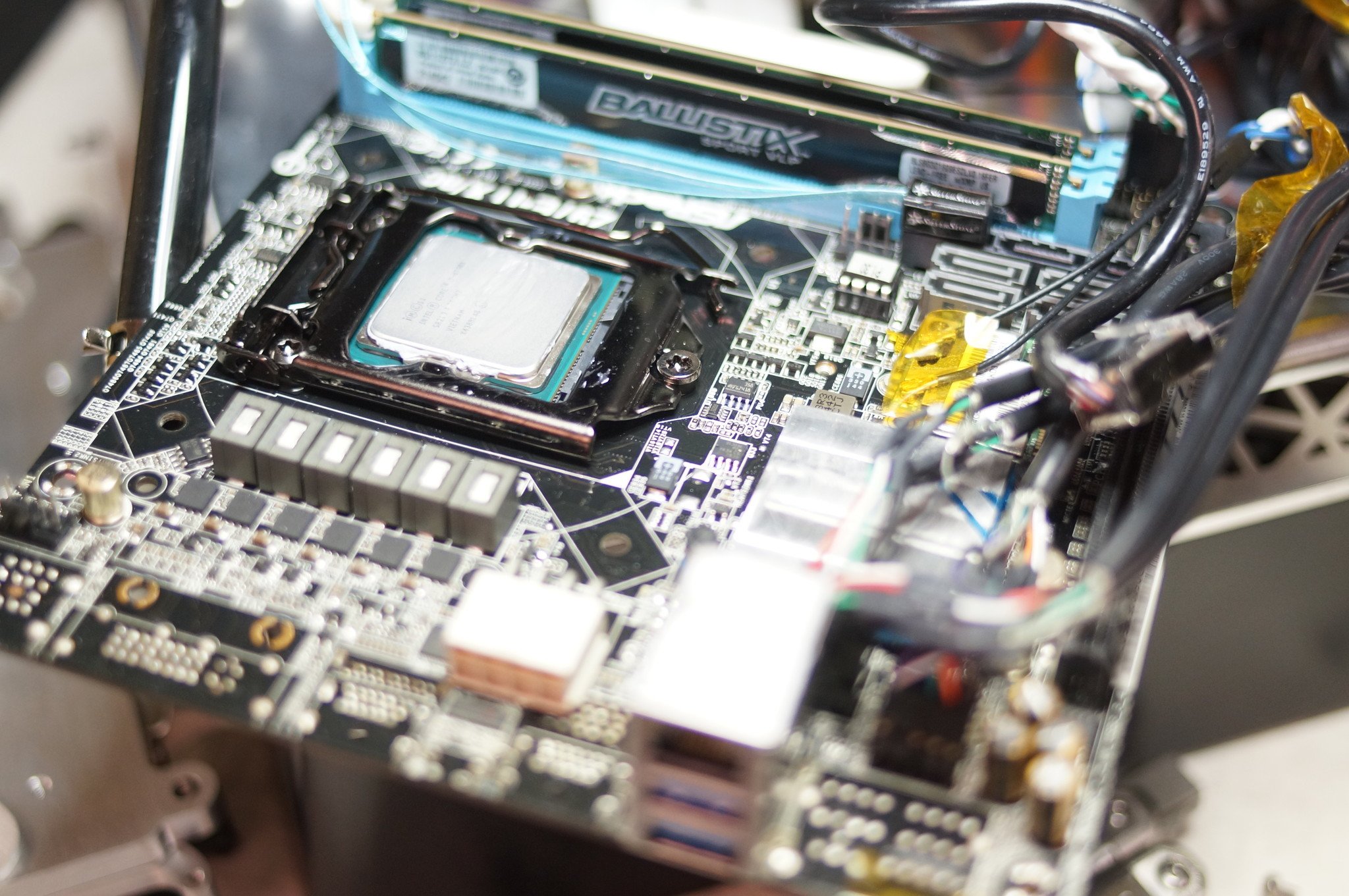
All in an enclosure that measures 6.5 inches tall by 9.5 inches wide by 9.5 inches deep. What do you guys think of Project Quantum?
Source: PC World

Harish Jonnalagadda is a Senior Editor overseeing Asia for Android Central, Windows Central's sister site. When not reviewing phones, he's testing PC hardware, including video cards, motherboards, gaming accessories, and keyboards.
